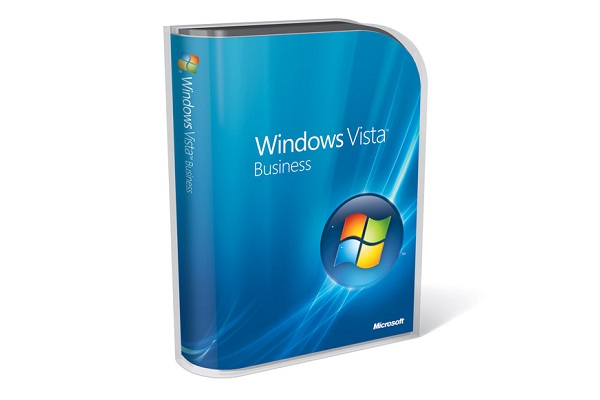Windows 8 adoption rates lower than Windows Vista
Despite ongoing hatred directed at Windows Vista, the operating system was more popular than Windows 8


No one would argue that the two most maligned operating systems ever to be released by Microsoft are Windows Vista and Windows 8, but it might surprise some to know that Vista was actually more popular in its heyday than Windows 8 is now.
As it stands in September 2014, according to stats available from NetMarketShare, Windows 7 is still the most popular OS with 51.21 per cent worldwide market share, followed by Windows XP in second position at 23.89 per cent.
This leaves Windows 8, Windows 8.1 and Windows Vista to make up the rest of Microsoft's share (Windows 2000 and Windows NT also make up 0.09 per cent).
The combined share of Windows 8 and Windows 8.1 stands at 13.37 per cent for September, with Windows Vista falling to 3.02 per cent, behind Apple's top offering, the Mac OS X 10.9. Windows 8.1 is just about topping its immediate predecessor.
When Vista was released in 2007, it must be noted Microsoft accounted for a higher percentage of the PCs used, at the same point in its lifespan as we are currently in for Windows 8, Vista enjoyed a larger percentage of users at 14.3 per cent.
This brings to light a smaller yet still significant problem for Microsoft, with previous concerns centring on the continued prominence of Windows 7 over the company's newer operating systems. The silver lining is that August 2014 saw Windows 7's share stick at 51.2 per cent, staying in place for the first time in months.
But Windows XP is also still clinging on, despite a steady decline as users opt for operating systems that still enjoy Microsoft support. Its second place position is not a good indication of Windows 8 and Windows 8.1's success, with the next iteration just around the corner.
Get the ITPro daily newsletter
Sign up today and you will receive a free copy of our Future Focus 2025 report - the leading guidance on AI, cybersecurity and other IT challenges as per 700+ senior executives
Windows 9 is expected to be announced at an event on 30 September, with a technical preview launched in early October.
Early rumours and leaks indicate the operating system will attempt to correct some of the less popular features of Windows 8, such as the removal of the start menu and the tablet-geared Metro UI which is considered unfriendly to desktop users.
Caroline has been writing about technology for more than a decade, switching between consumer smart home news and reviews and in-depth B2B industry coverage. In addition to her work for IT Pro and Cloud Pro, she has contributed to a number of titles including Expert Reviews, TechRadar, The Week and many more. She is currently the smart home editor across Future Publishing's homes titles.
You can get in touch with Caroline via email at caroline.preece@futurenet.com.
-
 Bigger salaries, more burnout: Is the CISO role in crisis?
Bigger salaries, more burnout: Is the CISO role in crisis?In-depth CISOs are more stressed than ever before – but why is this and what can be done?
By Kate O'Flaherty Published
-
 Cheap cyber crime kits can be bought on the dark web for less than $25
Cheap cyber crime kits can be bought on the dark web for less than $25News Research from NordVPN shows phishing kits are now widely available on the dark web and via messaging apps like Telegram, and are often selling for less than $25.
By Emma Woollacott Published
-
 Tiny11 review: Windows 11 with only 2GB of RAM
Tiny11 review: Windows 11 with only 2GB of RAMReview A version of Windows 11 for older machines that don't meet the full requirements
By Nik Rawlinson Published
-
 Red Hat Enterprise Linux becomes foundational operating system for Cohesity Data Cloud
Red Hat Enterprise Linux becomes foundational operating system for Cohesity Data CloudNews New strategic partnership between Red Hat and Cohesity aims to drive innovation in the data security and management space
By Daniel Todd Published
-
 Ubuntu shifts to four-week update cycle
Ubuntu shifts to four-week update cycleNews Critical fixes will also come every two weeks, mitigating the issues involved with releasing prompt patches on the old three-week cadence
By Richard Speed Published
-
 AlmaLinux follows Oracle in ditching RHEL compatibility
AlmaLinux follows Oracle in ditching RHEL compatibilityNews Application binary compatibility is now the aim with 1:1 now dropped
By Richard Speed Published
-
 How big is the Windows 10 cliff-edge?
How big is the Windows 10 cliff-edge?ITPro Network With some comparing the upcoming Windows 10 end of life to Windows XP, we ask members of the ITPro Network for their insight
By Jane McCallion Published
-
 Everything you need to know about the latest Windows 11 updates - from bug fixes to brand-new features
Everything you need to know about the latest Windows 11 updates - from bug fixes to brand-new featuresNews Two new cumulative updates are on the way and will be installed automatically on Windows 10 and Windows 11 machines
By Rory Bathgate Published
-
 How to download a Windows 11 ISO file and perform a clean install
How to download a Windows 11 ISO file and perform a clean installTutorial Use a Windows 11 ISO to install the operating system afresh
By John Loeppky Published
-
 We could all benefit from better Windows and macOS accessibility features
We could all benefit from better Windows and macOS accessibility featuresOpinion Today’s accessibility features can help you work through a nasty injury, but there’s still plenty of room for improvement
By Barry Collins Published